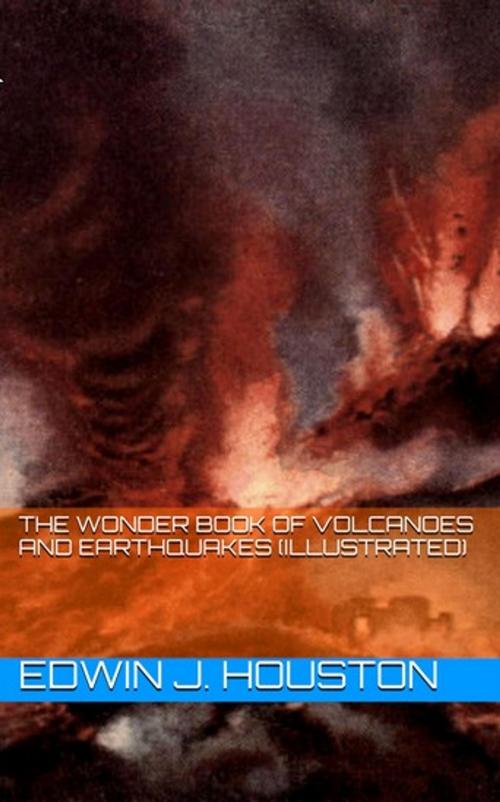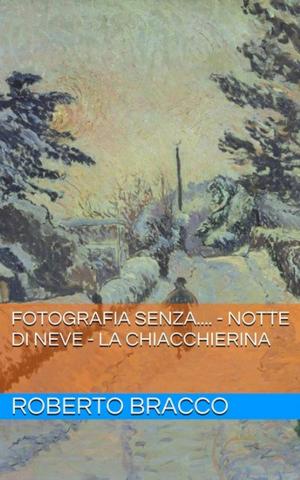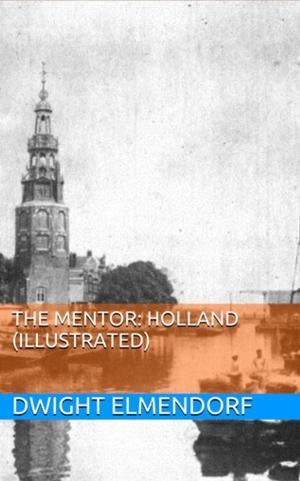The Wonder Book of Volcanoes and Earthquakes (Illustrated)
Nonfiction, Science & Nature, Science, Earth Sciences, Geology| Author: | Edwin J. Houston | ISBN: | 1230000155386 |
| Publisher: | Lost Leaf Publications | Publication: | July 27, 2013 |
| Imprint: | Language: | English |
| Author: | Edwin J. Houston |
| ISBN: | 1230000155386 |
| Publisher: | Lost Leaf Publications |
| Publication: | July 27, 2013 |
| Imprint: | |
| Language: | English |
Contents:
CHAPTER PAGE
I. The Volcanic Eruption of Krakatoa in 1883 1
II. Some Effects of the Eruption of Krakatoa 12
III. The Volcanic Island of Hawaii 26
IV. The Volcanic Island of Iceland 46
V. Vesuvius 58
VI. Other Volcanoes of the Mediterranean 73
VII. Orizaba, Popocatepetl, Ixtaccihuatl, and Other Volcanoes of Mexico 85
VIII. Coseguina and Other Volcanoes of Central America 91
IX. The Volcanic Mountains of South America 97
X. Volcanoes of the United States 105
XI. The Catastrophe of Martinique and the Volcanic Islands of the Lesser Antilles 117
XII. Some Other Noted Volcanic Mountains 125
XIII. Jorullo, a Young Volcanic Mountain 130
XIV. Mid-Ocean Volcanic Islands 137
XV. Submarine Volcanoes 141
XVI. Distribution of the Earth's Volcanoes 148
XVII. Volcanoes of the Geological Past 153
XVIII. LaPlace's Nebular Hypothesis 157
XIX. The Earth's Heated Interior, the Cause of Volcanoes 165
XX. Some Forms of Lava 178
XXI. Mud Volcanoes and Hot Springs 193
XXII. The Volcanoes of the Moon 207
XXIII. Earthquakes 219
XXIV. Some of the Phenomena of Earthquakes 231
XXV. The Earthquake of Calabria in 1783 245
XXVI. The Great Lisbon Earthquake of 1755 252
XXVII. The Earthquake of Cutch, India, in 1819 257
XXVIII. The San Francisco Earthquake of April 18, 1906 262[Pg viii]
XXIX. Some Other Notable Earthquakes 269
XXX. Sodom and Gomorrah and the Cities of the Plain 281
XXXI. Instruments for Recording and Measuring Earthquake Shocks 290
XXXII. Seaquakes 296
CHAPTER I
THE VOLCANIC ERUPTION OF KRAKATOA IN 1883
Krakatoa is a little island in the Straits of Sunda, about thirty miles west of the island of Java, and nearly the same distance east of the island of Sumatra. It is uninhabited and very small, measuring about five miles in length and less than three miles in width. Its total area is only thirteen square miles. This little piece of land made itself famous by what took place on it during the month of August, 1883.
Krakatoa is one of the many islands that form the large island chain known as the Sunda Islands. The most important islands of this chain are Sumatra, Java, Sumbawa, Flores, and Ceram. Between Sumatra and Java, the largest two of these islands, there is a channel called the Straits of Sunda that connects the waters of the Indian Ocean with those of the Pacific Ocean. The Straits of Sunda is an important piece of water that forms one of the great highways to the East. Shipping is, therefore, always to be found in its waters.
As can be seen by the map, Krakatoa is not far from the Equator, being situated in lat. 6° 7' S. and long. 105° 26' E. from Greenwich. Since there are about sixty-nine[Pg 2] miles in every degree of latitude, Krakatoa is about 420 miles south of the Equator, and is about twenty-five miles from Java. Java is part of the Dutch East Indies, which includes Java, Celebes, the Spice Islands, and parts of Borneo and Sumatra. Batavia, the principal seaport of Java, near the northwest coast, is a great shipping centre, visited by vessels from nearly all parts of the world. It has, however, no harbor, but is approached from the ocean by means of a canal two miles in length, the sides of which are provided with massive brick walls. Besides Batavia, which is situated about one hundred English miles east of Krakatoa, there are many smaller towns or villages, the most important of which is Anjer, a thriving seaport town, where sailing vessels obtain their supplies of food and fresh water. Before the eruption of Krakatoa, Anjer was provided with a strong, stone lighthouse.
Java is especially noted for its production of coffee, in which it is second only to Brazil. Its area is about the same as that of the State of New York. Java is one of the most densely populated parts of the world, containing nearly four times as many people as the whole State of New York.
These facts about the situation and surroundings of Krakatoa are necessary to an understanding of the wonderful thing that happened on it during the month of August, 1883. In that month Krakatoa suffered a most tremendous explosive volcanic eruption, for it is a volcano.
Contents:
CHAPTER PAGE
I. The Volcanic Eruption of Krakatoa in 1883 1
II. Some Effects of the Eruption of Krakatoa 12
III. The Volcanic Island of Hawaii 26
IV. The Volcanic Island of Iceland 46
V. Vesuvius 58
VI. Other Volcanoes of the Mediterranean 73
VII. Orizaba, Popocatepetl, Ixtaccihuatl, and Other Volcanoes of Mexico 85
VIII. Coseguina and Other Volcanoes of Central America 91
IX. The Volcanic Mountains of South America 97
X. Volcanoes of the United States 105
XI. The Catastrophe of Martinique and the Volcanic Islands of the Lesser Antilles 117
XII. Some Other Noted Volcanic Mountains 125
XIII. Jorullo, a Young Volcanic Mountain 130
XIV. Mid-Ocean Volcanic Islands 137
XV. Submarine Volcanoes 141
XVI. Distribution of the Earth's Volcanoes 148
XVII. Volcanoes of the Geological Past 153
XVIII. LaPlace's Nebular Hypothesis 157
XIX. The Earth's Heated Interior, the Cause of Volcanoes 165
XX. Some Forms of Lava 178
XXI. Mud Volcanoes and Hot Springs 193
XXII. The Volcanoes of the Moon 207
XXIII. Earthquakes 219
XXIV. Some of the Phenomena of Earthquakes 231
XXV. The Earthquake of Calabria in 1783 245
XXVI. The Great Lisbon Earthquake of 1755 252
XXVII. The Earthquake of Cutch, India, in 1819 257
XXVIII. The San Francisco Earthquake of April 18, 1906 262[Pg viii]
XXIX. Some Other Notable Earthquakes 269
XXX. Sodom and Gomorrah and the Cities of the Plain 281
XXXI. Instruments for Recording and Measuring Earthquake Shocks 290
XXXII. Seaquakes 296
CHAPTER I
THE VOLCANIC ERUPTION OF KRAKATOA IN 1883
Krakatoa is a little island in the Straits of Sunda, about thirty miles west of the island of Java, and nearly the same distance east of the island of Sumatra. It is uninhabited and very small, measuring about five miles in length and less than three miles in width. Its total area is only thirteen square miles. This little piece of land made itself famous by what took place on it during the month of August, 1883.
Krakatoa is one of the many islands that form the large island chain known as the Sunda Islands. The most important islands of this chain are Sumatra, Java, Sumbawa, Flores, and Ceram. Between Sumatra and Java, the largest two of these islands, there is a channel called the Straits of Sunda that connects the waters of the Indian Ocean with those of the Pacific Ocean. The Straits of Sunda is an important piece of water that forms one of the great highways to the East. Shipping is, therefore, always to be found in its waters.
As can be seen by the map, Krakatoa is not far from the Equator, being situated in lat. 6° 7' S. and long. 105° 26' E. from Greenwich. Since there are about sixty-nine[Pg 2] miles in every degree of latitude, Krakatoa is about 420 miles south of the Equator, and is about twenty-five miles from Java. Java is part of the Dutch East Indies, which includes Java, Celebes, the Spice Islands, and parts of Borneo and Sumatra. Batavia, the principal seaport of Java, near the northwest coast, is a great shipping centre, visited by vessels from nearly all parts of the world. It has, however, no harbor, but is approached from the ocean by means of a canal two miles in length, the sides of which are provided with massive brick walls. Besides Batavia, which is situated about one hundred English miles east of Krakatoa, there are many smaller towns or villages, the most important of which is Anjer, a thriving seaport town, where sailing vessels obtain their supplies of food and fresh water. Before the eruption of Krakatoa, Anjer was provided with a strong, stone lighthouse.
Java is especially noted for its production of coffee, in which it is second only to Brazil. Its area is about the same as that of the State of New York. Java is one of the most densely populated parts of the world, containing nearly four times as many people as the whole State of New York.
These facts about the situation and surroundings of Krakatoa are necessary to an understanding of the wonderful thing that happened on it during the month of August, 1883. In that month Krakatoa suffered a most tremendous explosive volcanic eruption, for it is a volcano.















